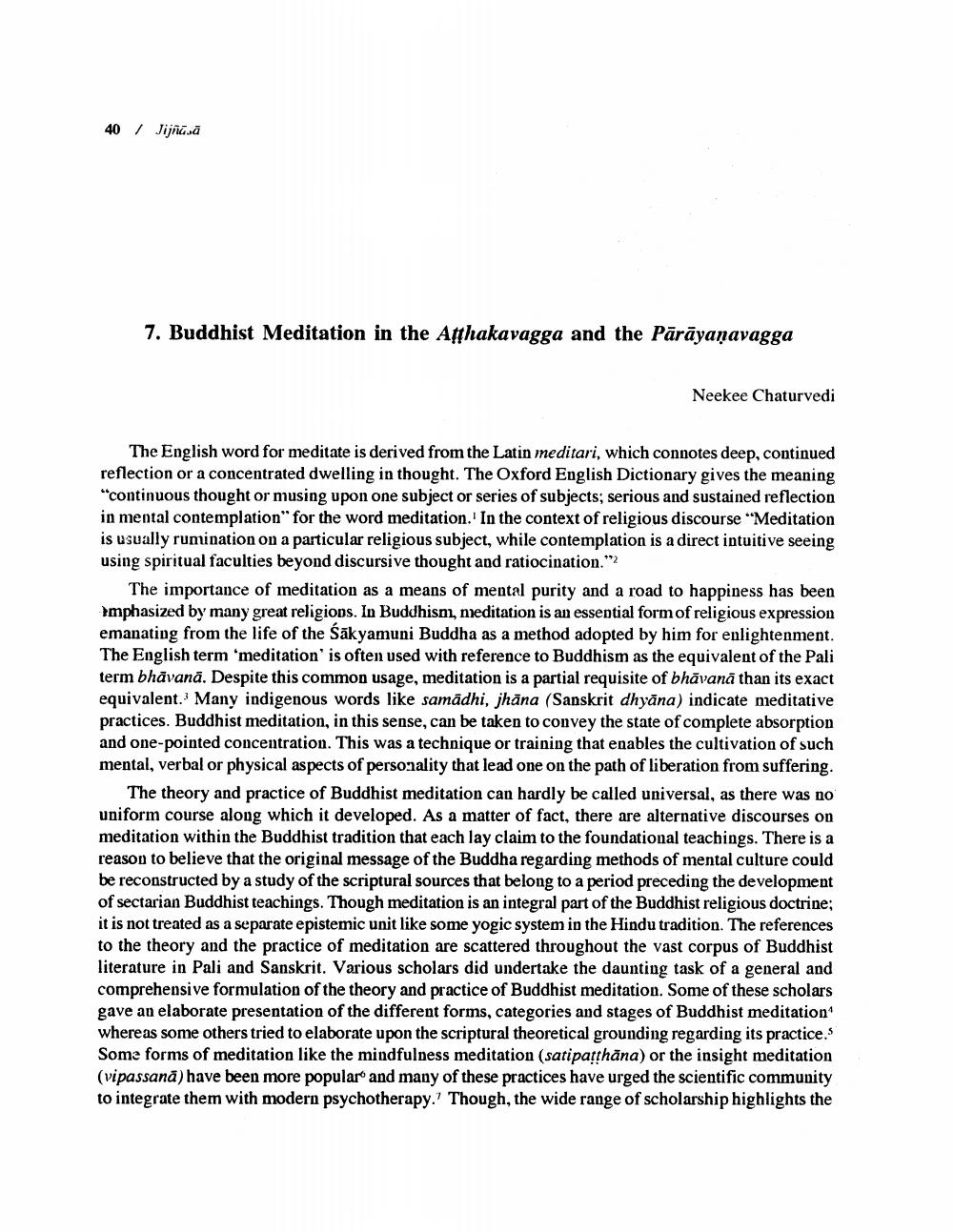________________
40 /
Jijnasa
7. Buddhist Meditation in the Atthakavagga and the Pārāyaṇavagga
Neekee Chaturvedi
The English word for meditate is derived from the Latin meditari, which connotes deep, continued reflection or a concentrated dwelling in thought. The Oxford English Dictionary gives the meaning "continuous thought or musing upon one subject or series of subjects, serious and sustained reflection in mental contemplation" for the word meditation. In the context of religious discourse "Meditation is usually rumination on a particular religious subject, while contemplation is a direct intuitive seeing using spiritual faculties beyond discursive thought and ratiocination."
The importance of meditation as a means of mental purity and a road to happiness has been mphasized by many great religions. In Buddhism, neditation is an essential form of religious expression emanating from the life of the Sākyamuni Buddha as a method adopted by him for enlightenment. The English term 'meditation' is often used with reference to Buddhism as the equivalent of the Pali term bhāvanā. Despite this common usage, meditation is a partial requisite of bhāvanā than its exact equivalent. Many indigenous words like samadhi, jhāna (Sanskrit dhyāna) indicate meditative practices. Buddhist meditation, in this sense, can be taken to convey the state of complete absorption and one-pointed concentration. This was a technique or training that enables the cultivation of such mental, verbal or physical aspects of personality that lead one on the path of liberation from suffering.
The theory and practice of Buddhist meditation can hardly be called universal, as there was no uniform course along which it developed. As a matter of fact, there are alternative discourses on meditation within the Buddhist tradition that each lay claim to the foundational teachings. There is a reason to believe that the original message of the Buddha regarding methods of mental culture could be reconstructed by a study of the scriptural sources that belong to a period preceding the development of sectarian Buddhist teachings. Though meditation is an integral part of the Buddhist religious doctrine; it is not treated as a separate epistemic unit like some yogic system in the Hindu tradition. The references to the theory and the practice of meditation are scattered throughout the vast corpus of Buddhist literature in Pali and Sanskrit. Various scholars did undertake the daunting task of a general and comprehensive formulation of the theory and practice of Buddhist meditation. Some of these scholars gave an elaborate presentation of the different forms, categories and stages of Buddhist meditation whereas some others tried to elaborate upon the scriptural theoretical grounding regarding its practice. Some forms of meditation like the mindfulness meditation (satipatthāna) or the insight meditation (vipassanā) have been more popular and many of these practices have urged the scientific community to integrate them with modern psychotherapy. Though, the wide range of scholarship highlights the




